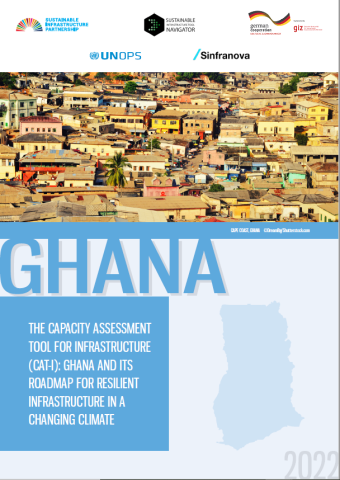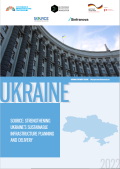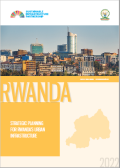
The case study details Ghana's efforts to strengthen the enabling environment to plan, deliver and manage their infrastructure systems to be climate-resilient using the Infrastructure life cycle assessment tool CAT-I.
One of the key drivers of the Ghanaian economy is the agricultural sector, accounting for almost 20 percent of its exports in 2020. Like agriculture, infrastructure is key for both economic and social development. However, additional effort is needed, as significant disparities still exist in Ghanaians’ access to basic services. In 2015, around 20% of the population of Ghana still did not have access to drinking water and 14.1% of the population lacked access to electricity. It is critical for Ghana to climate-proof its infrastructure systems and make them resilient to various disruptions. The Roadmap for Resilient Infrastructure in a Changing Climate initiative has supported Ghana in identifying its infrastructure adaptation needs in the energy, water and transport sectors. It provides guidance on how those needs can be met to enhance the long-term resilience of Ghana’s infrastructure to the threats of climate change.
The CAT-I Adaptation Theme was used to gather evidence on the challenges and needs within the enabling environment to plan, deliver, operate and maintain climate-resilient and inclusive infrastructure systems. CAT-I was chosen because it holistically assesses the challenges and needs within the enabling environment and across the infrastructure life cycle. The adaptation needs were identified across three stages of the infrastructure life cycle (planning, delivery and management stages) because of their ability to impact national development objectives. The identification of the challenges and needs informed the priority areas within the enabling environment that should be candidates for improvement to support climate adaptation.




